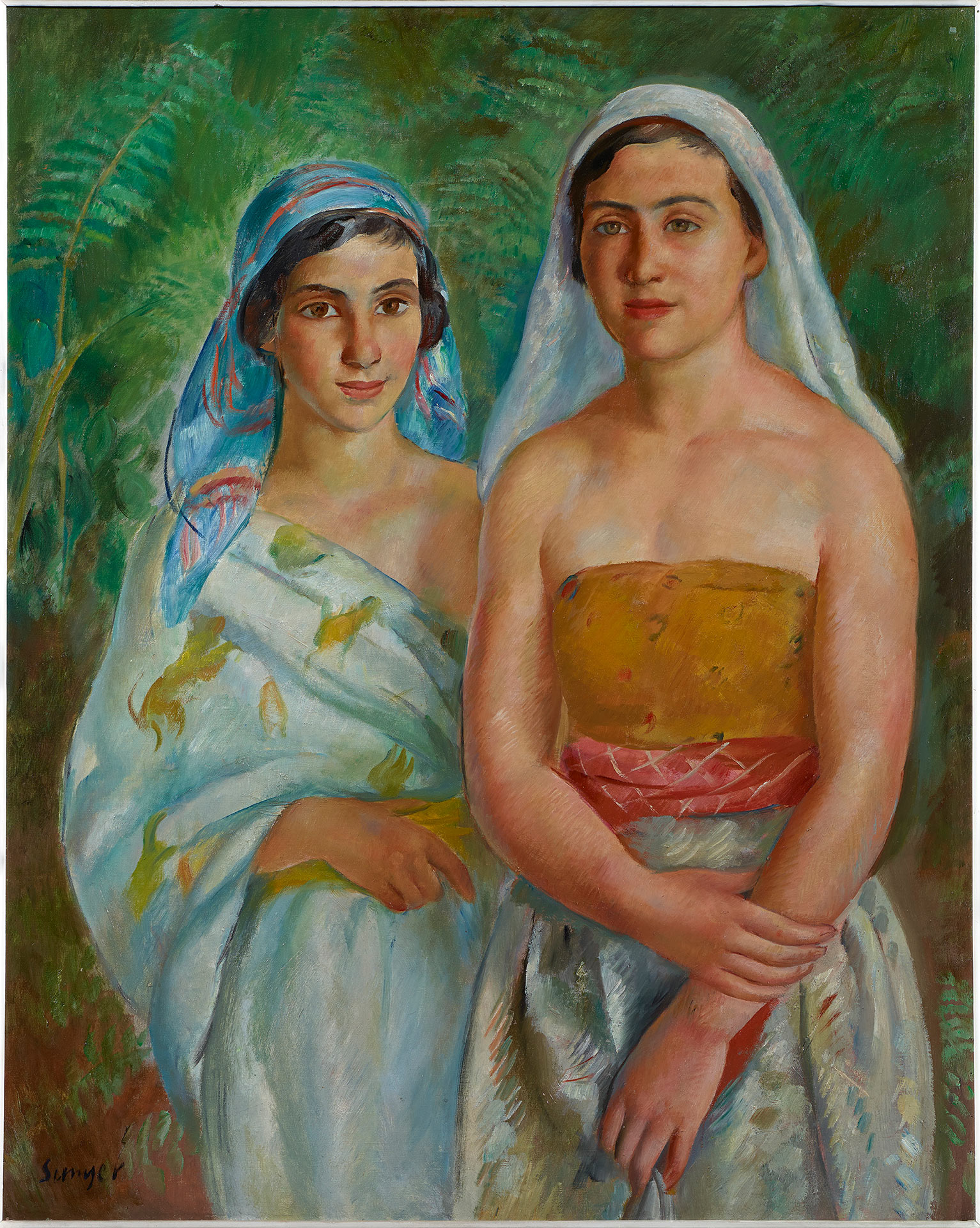
Joaquím Sunyer (Sitges, Barcelona, 1874-1956)
The Daure Girls
Circa 1935-1936
WORK INFORMATION
Oil on canvas, 93.5 x 75 cm
OTHER INFORMATION
Signed in the lower left-hand corner: "Sunyer".
Though born in Sitges, when he was 15 Joaquim Sunyer moved to Barcelona with his family. He studied at the Llotja School but did not apply himself over-much to the rigours of academic life: he sought other paths, parallel to those followed by his classmates Mir and Nonell.
In 1896, while still a virtually unknown painter, he moved to Paris and there obtained a degree of renown. Between 1901 and 1904 he lived in the Bateau-Lavoir, the famous building in Montmartre where some of the leading lights of the early international avant-garde lodged. During this period his drawings were influenced primarily by Steinlein—an influence that began when he was still in Barcelona—and his paintings owed much to the Post-Impressionists: Bonnard, Vuillard, occasionally Toulouse-Lautrec, and echoes of the mature Degas.
After a trip to Spain, where he discovered the Prado and reconnected with his native Sitges, Sunyer's Post-Impressionism began to falter, perhaps as a consequence of being reunited with the Mediterranean, his long conversations with the older Renoir, or the infectious ideas of Eugeni d'Ors. He may have been influenced by all these factors together with the crisis of French Post-Impressionism, overtaken by the advent of new trends like Fauvism and the first avant-garde movements.
In any event, at this time Sunyer made a radical change, but not to embrace any of these new tendencies. Though he made use of them, his new style was a personal synthesis. From Les Fauves he borrowed their joyful, determined assessment of the Mediterranean world, and from the Cubists he took a highly structured vision of things and an overstatement of volumes. Yet Sunyer was far from being a Fauvist or Cubist: he unveiled his unique synthesis at a solo show in Barcelona in 1911 that confirmed him as the new pictorial leader of Noucentisme. That new style would characterise Sunyer's work for the rest of his life. His is a placid, weighty, serene art. Instead of capturing a fleeting moment or a particular sensation, he condensed timeless landscapes or figures, and his art thus acquired an archetypal quality.
The Banco Santander Collection owns two works from his mature period. Les noies Daure [The Daure Girls] is a good example of Sunyer's fondness for double female portraits, with both figures together and in a similar position. In this case, the subjects are the daughters of Charles Daure, a French businessman at whose house in Mazamet Sunyer painted off and on between 1935 and 1936. The artist became well acquainted with the Daure family, and the girls posed more as models than as characters, allowing Sunyer to express himself freely in this work.
Mujer con gato [Woman with a Cat] is a work from the artist's final years, and the sitter is undoubtedly the same woman who appears in several of his paintings from the 1940s and 50s. [Francesc Fontbona]

